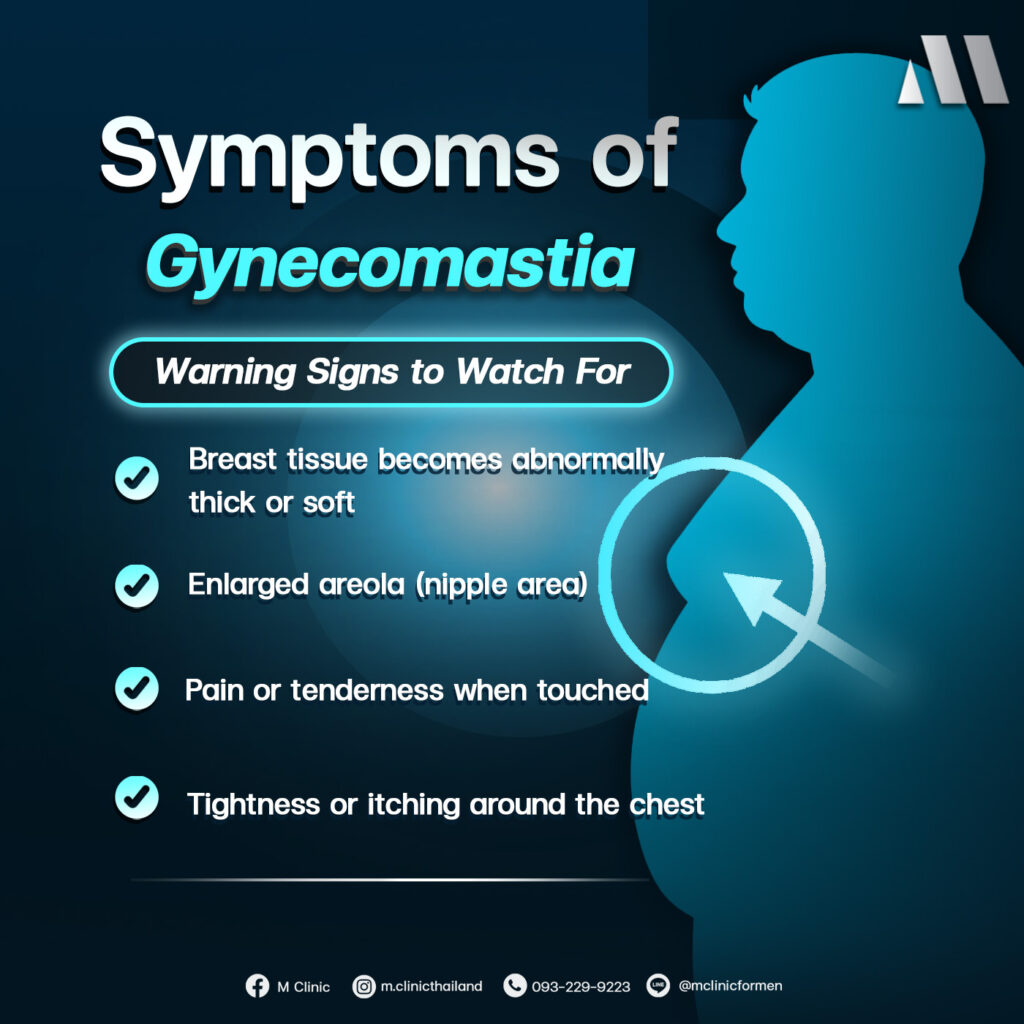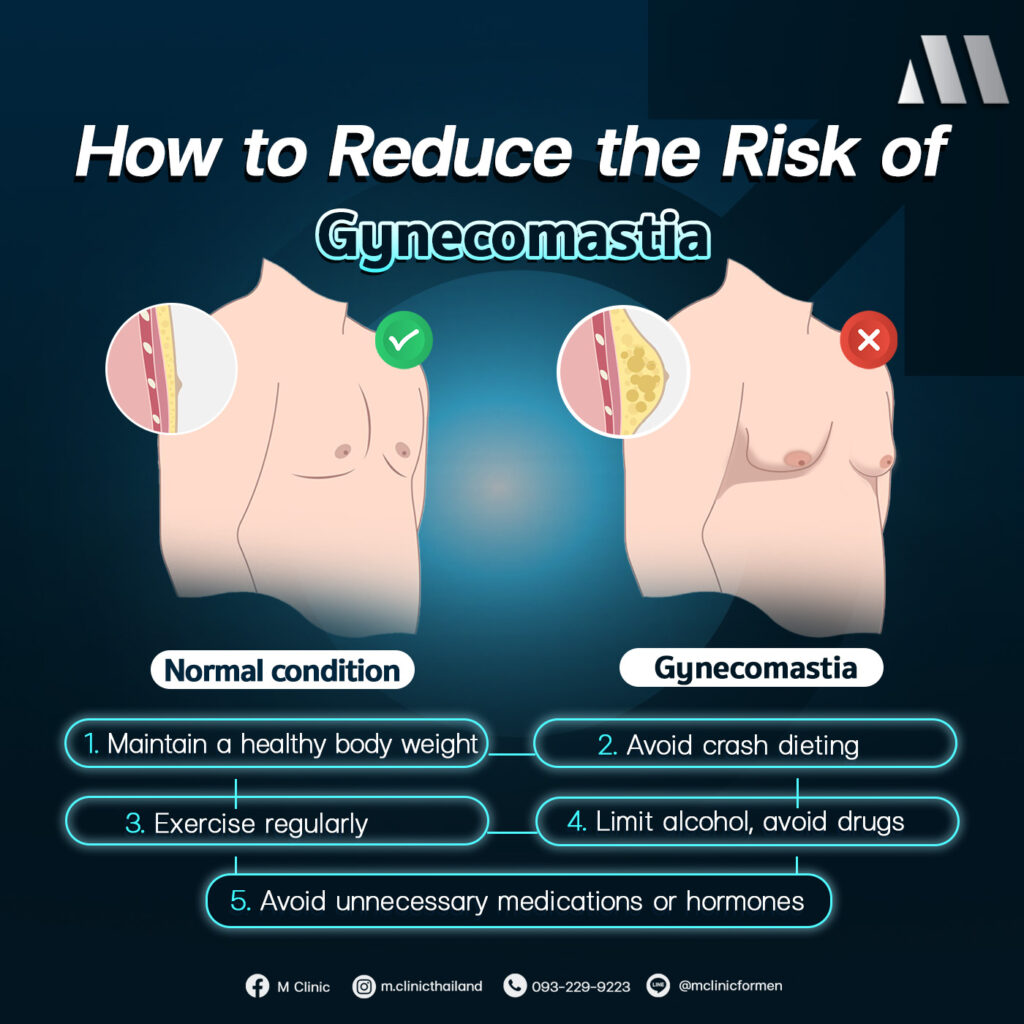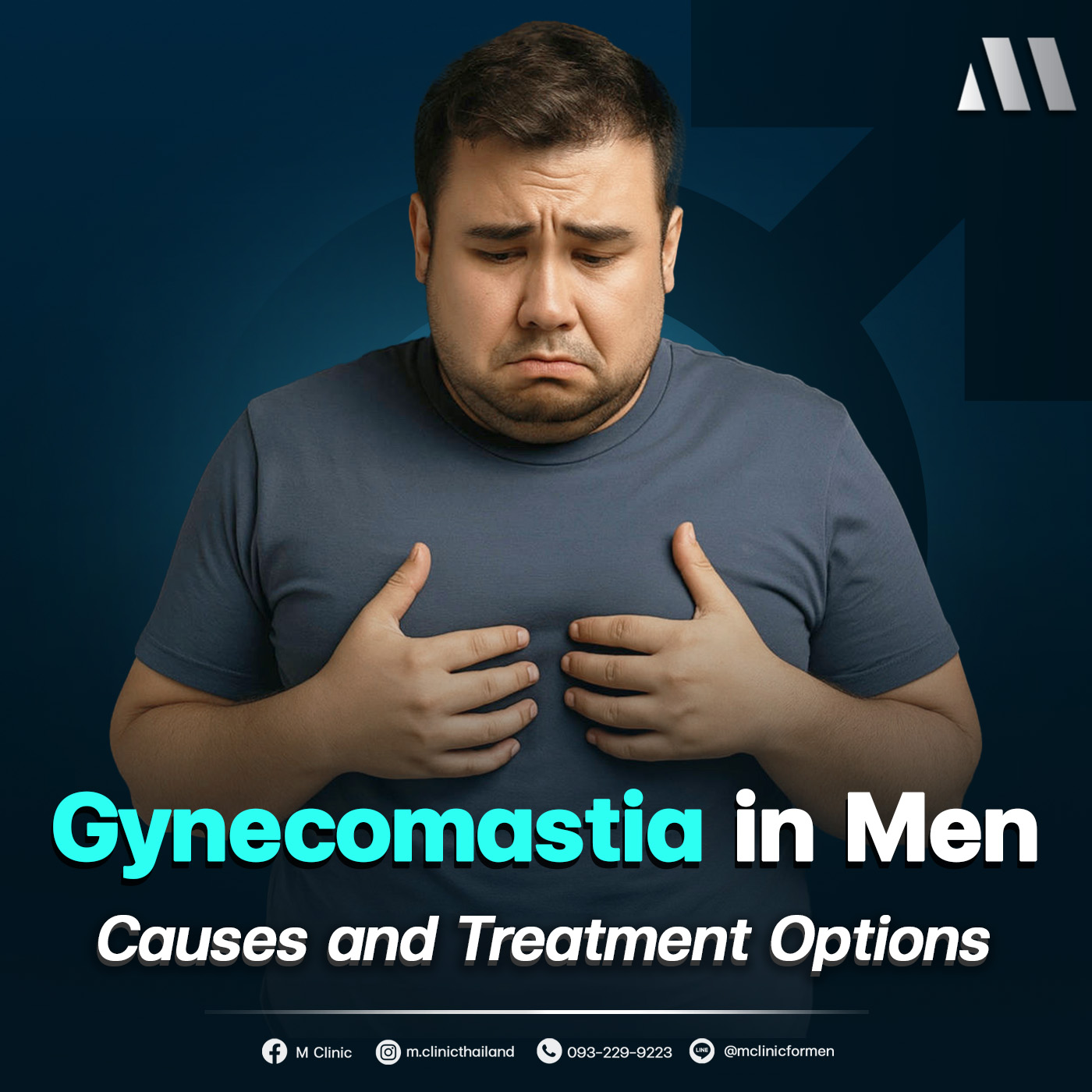Gynecomastia: What Causes Male Breast Enlargement and What Should You Do?
Did you know… enlarged breasts are not just a concern for women? Men can also experience abnormal breast growth, a condition known as Gynecomastia.
What is Gynecomastia?
Gynecomastia is a condition in which male breast tissue becomes enlarged or overdeveloped, often referred to in simple terms as “male breast enlargement.” This condition is not caused by fat accumulation alone but rather by an imbalance between male hormones (Testosterone) and female hormones (Estrogen).
It can occur at various stages of life:
- Infants: Common and usually not abnormal. This is often due to estrogen passed from the mother during pregnancy. The condition typically disappears within a few weeks.
- Adolescents (10–16 years old): Rapid hormonal changes during puberty may lead to temporary hormone imbalance. Testosterone levels may not rise immediately while estrogen remains active, causing breast tissue growth. Most cases resolve naturally within 6 months to 2 years. However, if the breasts grow excessively, become painful, or appear abnormal, medical evaluation is recommended to rule out other causes such as tumors or hormonal disorders.
- Older Adults (50+ years old): Testosterone levels naturally decline with age, while estrogen continues to be produced in small amounts. This shifts the hormone balance in favor of estrogen. Health conditions common in this age group (such as liver disease, kidney disease, thyroid disorders, or tumors) as well as certain medications (e.g., blood pressure drugs, diuretics, or heart medications) can also trigger Gynecomastia. In such cases, medical evaluation is important.
Although Gynecomastia is not considered a dangerous disease, it can affect confidence, daily life, and sometimes signal underlying health issues. This article will help you understand Gynecomastia in detail—its causes, symptoms, treatments, and prevention.

Causes of Gynecomastia
The primary cause of Gynecomastia is a decrease in testosterone or an increase in estrogen, which stimulates breast tissue growth. Contributing factors include:
- Age-related hormonal changes
Testosterone peaks during adolescence and gradually declines with age, especially after 50, allowing estrogen to have a stronger effect on breast tissue. - Liver and kidney diseases
- Cirrhosis: The liver loses its ability to metabolize excess hormones, leading to higher estrogen levels.
- Chronic kidney failure (especially in patients requiring dialysis) can disrupt hormone balance.
- Tumors
- Adrenal gland tumors may increase estrogen production.
- Pituitary gland tumors may trigger excess estrogen or suppress testosterone.
- Testicular tumors can also cause excess estrogen production.
- Medications
- Blood pressure medications such as Spironolactone (which has estrogen-like effects).
- Certain chemotherapy drugs that affect hormone regulation.
- Some antidepressants that disrupt hormone balance.
- Long-term steroid use, which suppresses testosterone production.
- Substance use
- Marijuana can impair endocrine function.
- Excessive alcohol damages the liver and disrupts hormone balance.
- Illicit drugs such as heroin or amphetamines can worsen hormone imbalance.
- Malnutrition
Severe calorie restriction reduces testosterone production while estrogen remains present. Crash dieting also stresses the endocrine system, worsening hormone imbalance.
Symptoms of Gynecomastia
Key signs and symptoms include:
- Thicker or softer breast tissue: Feels smooth and pliable compared to tumors, which are usually hard.
- Enlarged areola (nipple area): The areola may become wider, more raised, and sometimes darker.
- Mild pain or tenderness: Discomfort when pressing or when the chest rubs against clothing.
- Tightness or itchiness: Skin stretching around the breast may cause these sensations.
⚠️ Warning signs requiring medical check-up: A hard lump, significant pain, or discharge (clear, bloody, or cloudy fluid) from the nipple could indicate other conditions such as tumors or infections.
Treatment and Management
Treatment depends on the cause, duration, and severity of breast growth:
- Observation
In adolescents or recent-onset cases, the condition often resolves naturally within 6 months to 2 years. Regular monitoring is recommended. - Medication adjustment
If caused by drugs (e.g., blood pressure medication, antidepressants, steroids), doctors may adjust or switch medication. This must be done under medical supervision. - Treating underlying diseases
Addressing liver, kidney, endocrine disorders, or tumors can improve Gynecomastia. - Hormonal medications
In severe cases, doctors may prescribe drugs that balance estrogen and testosterone. These must be used cautiously under close medical supervision due to potential side effects. - Surgery
For persistent or severe enlargement, surgery may be considered to remove excess breast tissue and restore chest contour. Techniques include liposuction with gland removal or direct excision.

Lifestyle Changes to Reduce Risk
While Gynecomastia cannot always be prevented, healthy lifestyle habits can lower risk and improve hormone balance:
- Maintain a healthy weight and avoid obesity.
- Eat a balanced diet with whole foods, lean protein, fruits, vegetables, and healthy fats. Avoid crash dieting, high-fat, high-sugar, and processed foods.
- Exercise regularly: Strength training boosts testosterone; cardio helps control weight and supports heart health.
- Limit alcohol consumption and avoid recreational drugs.
- Do not use unnecessary hormones or long-term medications without medical guidance.
Key Takeaway
Gynecomastia is common among men at different ages. While it often resolves on its own, it can sometimes indicate underlying health problems. Regular self-observation and timely medical consultation are essential if symptoms persist.

